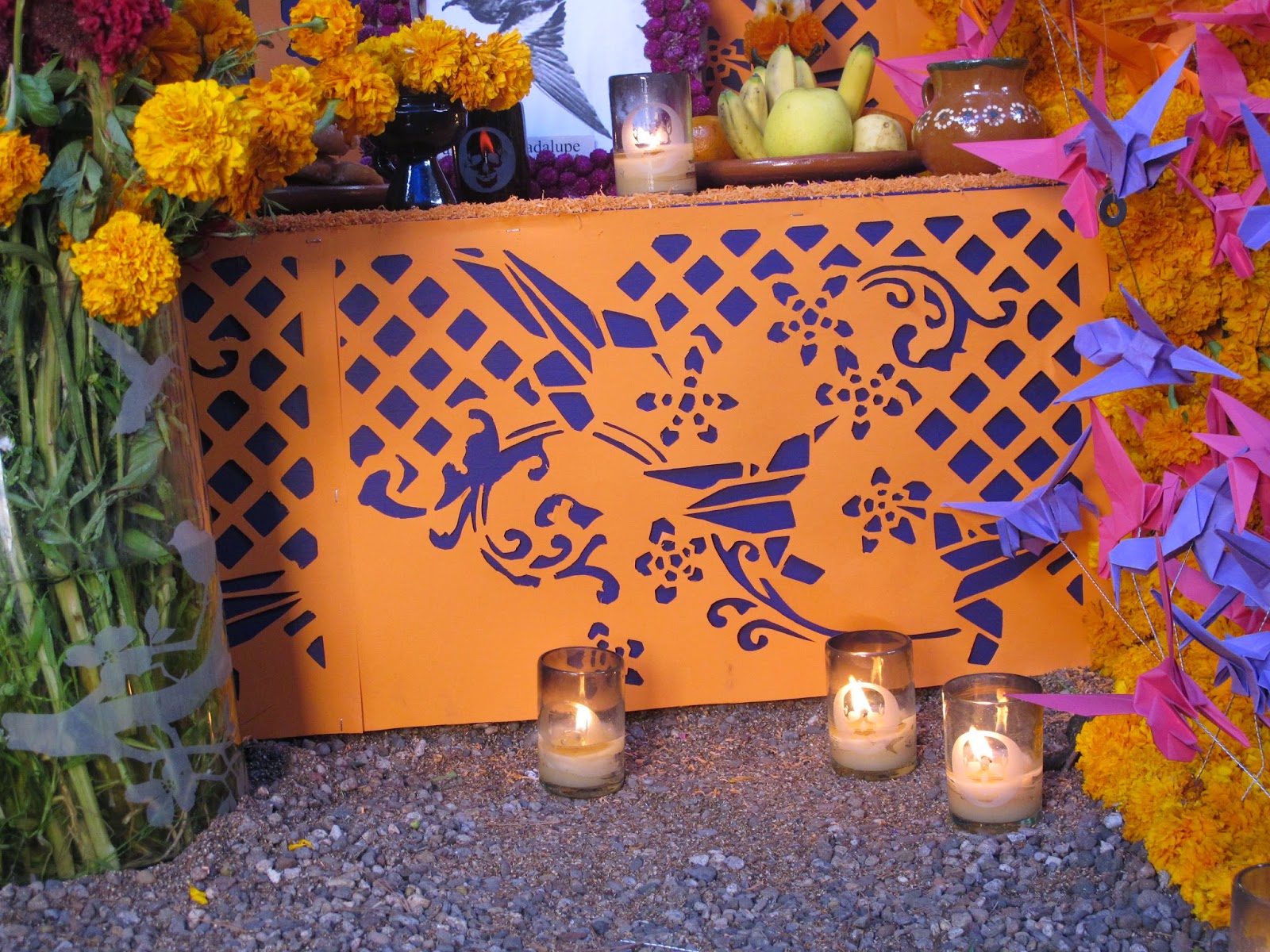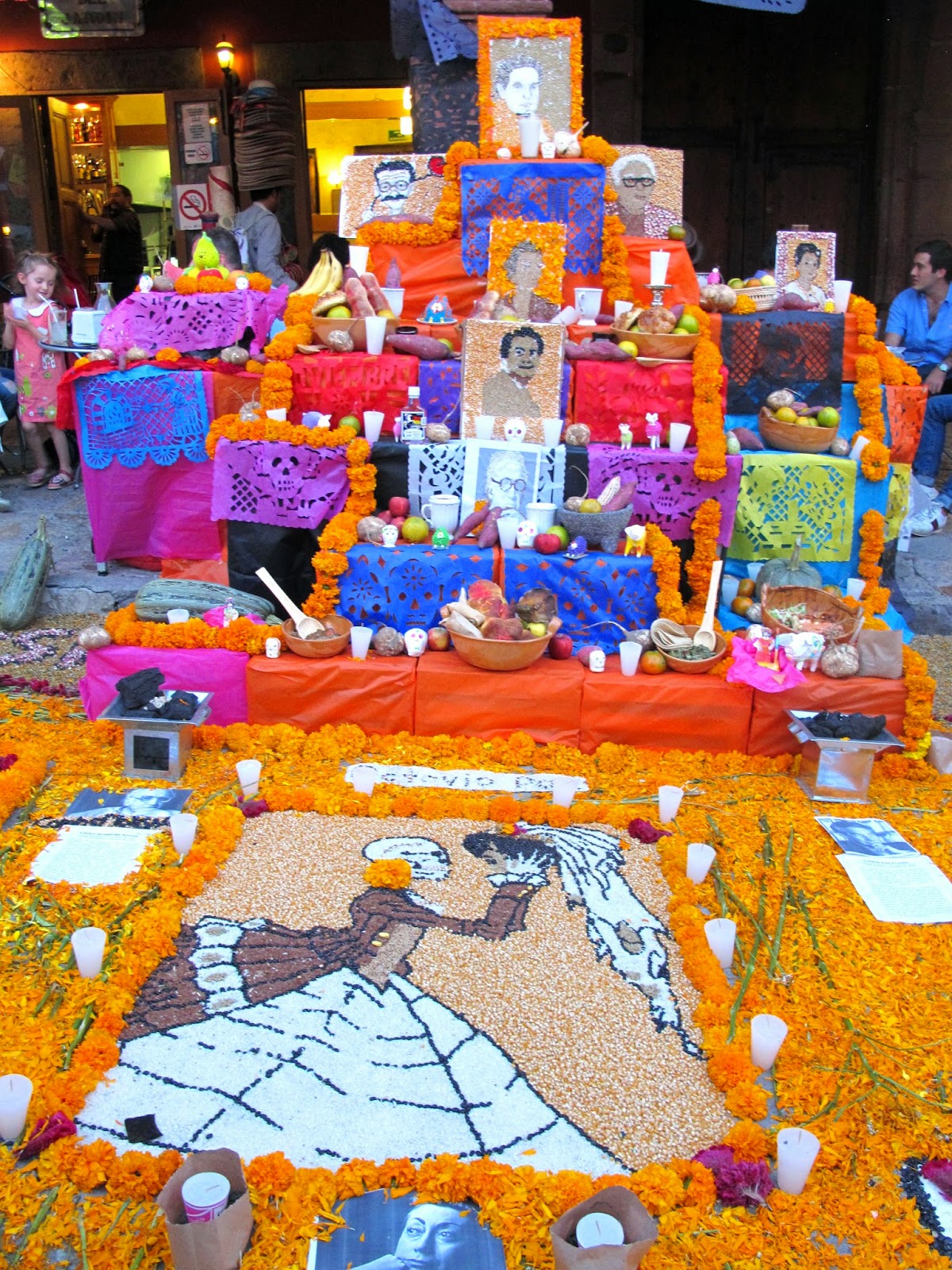The altar (ofrenda) is a wonderful time to cherish the loved ones, ancestors and friends who have passed on . It is a colorful event in which the ofrenda is a display in ones home, a local shop or ones property which provides a feast for the visiting spirit.
Favorite items of the person being honored are included in the altar.
My home altar is in honor of my beloved brother, Carter Kane Mullen. Every year I honor his memory in this niche in my home.
Many of Carter's favorite things: a bottle of Turnbull Cabernet Sauvignon , a shot of tequila, a basketball, a book on hiking the Grand Canyon and Lake Powell, masks representing his Mexican mask collection that I donated in his behalf to the Museo de las Americas here in Denver, a CD by The Who (I had asked him once if he could be a musician, what instrument, etc. ... he said he would be Pete Townshend of The Who and play guitar), a pear (his favorite fruit), some dogs, pheasant feathers for his love of bird hunting, a heart milagro representing the big generous heart he had, Sudoku (a morning ritual while having breakfast) and his infamous red pen that he used to edit copy at his advertising and public relations agency.
Leaving Atotonilco, I passed this wonderful altar with Marigolds, skulls and paper flowers. The Marigold, Cempasuchil, is the most traditional flower used. In Aztec times, is was the flower of 400 lives. Its fragrance leads the spirits home.
Talk about creativity! Afredo and Jim, owners of Camino Silvestre in San Miguel, had the most incredible ofrenda. Hundreds of hand-made origami hummingbirds in flight.
And the hummingbird papel picado they made was beautiful.
Candles represent fire and a light to guide the spirit back to the living. Copal, incense, is burned and thought to elaborate prayers to God.
This colorful altar was at the Diego Rivera Museum centered around the fountain that was on the main floor of the house he grew up in as a child. Colorful tissue paper, papel picado, is cut into intricate designs. A throw back to the Aztecs who used paper banners in their rituals. Each color has a different meaning: pink for celebration, white for purity and hope, purple from Catholicism representing pain, suffering and mourning, yellow and orange for the Cempasuchil, the sun and light and red for the blood of Jesus for Christians and for the indigenous, the blood of the people and animals.
The main plaza, el jardin, in San Miguel de Allende came to life over night with altars honoring past musicians.
I love the creativity of using large ceramic comals (Mexican griddles) as the canvas for the portraits.
The use of different grains, corn and seeds along with the marigolds and cocks comb is brilliant.
What a special way to celebrates the lives of our loved ones that have passed on. Those we will never forget and who are with us in spirit everyday.
Subscribe to:
Post Comments (Atom)











No comments:
Post a Comment